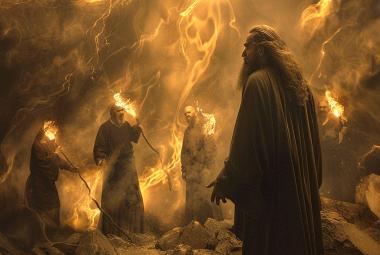The headlines during the summer months of 2021 cover the full range of human experiences – from natural disasters to man-made horrors. Tracking each story line proves both a daunting and discouraging task. Headlines that might have flown under your radar these past months relate to the passage in the state of Oregon of Senate Bill 744 which “suspends the requirement of showing proficiency in Essential Learning Skills as a condition of earning a diploma during 2021-2022 or 2022-2023 school year.”1 The Nine Essential Skills are cross-disciplinary skills that students should be developing across grades K- 12. For students first enrolled in Grade 9 in 2010 – 2011 or later, three of the Essential Skills are graduation requirements:
- Read and comprehend a variety of text
- Write clearly and accurately
- Apply mathematics in a variety of settings.
The headlines read:
- “New Oregon Law Suspends Graduation Testing Requirement”2
- Oregon governor signs bill ending reading and math proficiency requirements for graduation3
- “Oregon Gov Kate Brown scraps need for high school students to prove proficiency in math, reading and writing to get diploma in bid to bolster minority students who ‘don’t test well’”4
Many developments in education are susceptible to a greatly varied narrative based on the author’s bias and objective; this issue was no exception. The first headline focuses on assessment; the second points to an issue with curriculum; and the final underscores a discriminatory motive for those who voted on and signed the bill into law. During my presentation at the 2014 Strategic Perspective Conference IX5 I introduced what I termed the “three-legged stool of education” comprised of three required elements for any educational program:
- Curriculum (what will be learned)
- Pedagogy (how will it be learned)
- Assessment (what was learned)
During the decades of the 1990’s, a national narrative across the fifty states gained momentum to develop national standards that would outline the knowledge and skills America’s student were expected to know and do. Companion to creating these standards was an assessment program to measure whether students were meeting these expectations. “We cannot manage what we cannot measure” is a popular and powerful management adage. What previously was described as a “scope and sequence” of curriculum gave way to the trendy terminology of “standards” and “standardized testing.” President Bush in 2001 reauthorized and amended the Elementary and Secondary Education Act (“ESEA”) of 1965 with his well-known legislation referred to by most as No Child Left Behind. Standardized testing found fans and funding, and these proponents cried for standards that could be measured. “Please note that in the United States, the federal role in education is limited. Because of the Tenth Amendment (to the United States Constitution,) most education policy is decided at the state and local levels.”6
This led to the development and release in 2010 of the Common Core State Standards in English language arts and mathematics. Incentivized by President Obama’s Race To The Top competitive grant initiative, over forty states adopted the standards and private businesses7 saw meaningful profits for developing tests to measure the results.
This conversation about standards in education is ongoing for over thirty years and now Oregon suspended testing to measure these standards. Does this seem like any way to improve education or to efficiently use financial and human resources?
While this is a current development in the topic of standards, my premise is that standards of truth have been eroding and collapsing for the past century. In his famous sermon from 1922 titled Shall The Fundamentalists Win?8 Harry Emerson Fosdick challenged the church to be more tolerant and less dogmatic. Fosdick objected to those he described as fundamentalists who insist on certain inflexible truths. “It is interesting to note where the Fundamentalists are driving in their stakes to mark out the deadline of doctrine around the church, across which no one is to pass except on terms of agreement. They insist that we must all believe in the historicity of certain special miracles, preeminently the virgin birth of our Lord; that we must believe in a special theory of inspiration—that the original documents of the scripture, which of course we no longer possess, were inerrantly dictated to men a good deal as a man might dictate to a stenographer; that we must believe in a special theory of the atonement—that the blood of our Lord, shed in a substitutionary death, placates an alienated Deity and makes possible welcome for the returning sinner; and that we must believe in the second coming of our Lord upon the clouds of heaven to set up a millennium here, as the only way in which God can bring history to a worthy denouement. Such are some of the stakes which are being driven, to mark a deadline of doctrine around the church.”9 Fosdick abhorred any commitment to the fundamental truths or what might be termed the standards of the Truth. Paul in writing his pastoral epistles to Timothy and to Titus referenced “sound doctrine” several times. “(H)olding fast the faithful word as he has been taught, that he may be able, by sound doctrine, both to exhort and convict those who contradict.”10 “But as for you, speak the things which are proper for sound doctrine.”11 “For the time will come when they will not endure sound doctrine, but according to their own desires, because they have itching ears, they will heap up for themselves teachers.”12
Fosdick’s sermon found a great readership and he was featured on the cover of a 1930 edition of Time magazine. The assault on the fundamental standards of truth was underway.
The post-modern movement follows the modernism espoused by Fosdick and generally refers to a mid-century movement to disconnect from the priorities and premises of even the modernist. “Postmodernism overturned the idea that there was one inherent meaning to a work of art or that this meaning was determined by the artist at the time of creation. Instead, the viewer became an important determiner of meaning, even allowed by some artists to participate in the work as in the case of some performance pieces. Other artists went further by creating works that required viewer intervention to create and/or complete the work.”13 This betrayal of the fundamental standards of art have led to disturbing results. One professor tells of an assignment for his students where he asks them to describe a particular piece of art filled with amorphous shapes and all sorts of colors. The students describe what they see as “bold,” “ambitious,” and “courageous.” He reveals to them that it is a picture of his art smock! Eyeglasses were left on the floor of an art gallery and were celebrated as a work of art until it was revealed it was a prank.14 “The gallery’s verified Twitter account drew its own parallels to other artists’ work.” And more disturbing and grotesque productions labeled as art pervade – a golden toilet named America15 or the urination on a cross.16
In the 1990’s the Emergent Church (or what I like to call post-church) movement gained momentum. “The Emergent Church movement is a progressive Christian movement that attempts to elevate experience and feelings on a par with Christian doctrine. Many do not believe man can know absolute truth and believe God must be experienced outside of traditional biblical doctrines.”17 During one Bible study in the late-1990’s, a participant long in the faith blurted out, “But aren’t we supposed to challenge everything?” to which I replied, “You mean we are supposed to question whether Jesus is God?” The momentum to undermine every fundamental standard was overcoming society, art, philosophy, and even sound doctrine.
In 2016, the Oxford Dictionary identified “post-truth” as its Word of the Year and defined is as “(r)elating to or denoting circumstances in which objective facts are less influential in shaping public opinion than appeals to emotion and personal belief.” This erosion of standard – the vanishing standard – is bearing the fruit of the seeds planted.
Social media over standards. Experience over evidence. Subjectivity over objectivity. Opinion over fact. The long arc of the past dozen decades has eroded any obligation to standards, foundations, or fundamentals. Universal truth is turned into personal truths. The sum of 2 plus 3 is up for debate. So the next time you find yourself in a dialogue or a debate ask the question, “What standard(s) are at play here?” If there is no agreement on what constitutes twelve inches, we can never agree on how to cut a piece of wood one foot long! For a more practical example, I find myself in countless conversations about the current vaccination. I ask the question, “Can we agree that those who get the shot are at less risk from the disease and at greater risk from the shot while those who do not get the shot are at less risk from the shot and at greater risk from the disease?” That might bear re-reading. If this axiomatic standard cannot be agreed upon, the rest of the conversation is fruitless.
Notes:
3 Oregon governor signs bill ending reading and math proficiency requirements for graduation (yahoo.com)
4 Oregon scraps requirement for high school students to prove proficiency in math, reading and writing | Daily Mail Online
7 Pearson is out, Questar is in for N.Y. Common Core tests (timesunion.com) for one story about the confusion and chaos surrounding two of these companies
8 https://www.wrs.edu/assets/docs/Courses/Classic_Fundamentalism/Fosdick--Shall_Fundamentalists_Win.pdf
9 Id.
10 Titus 1:9
11 Titus 2:1
12 2 Timothy 4:3





